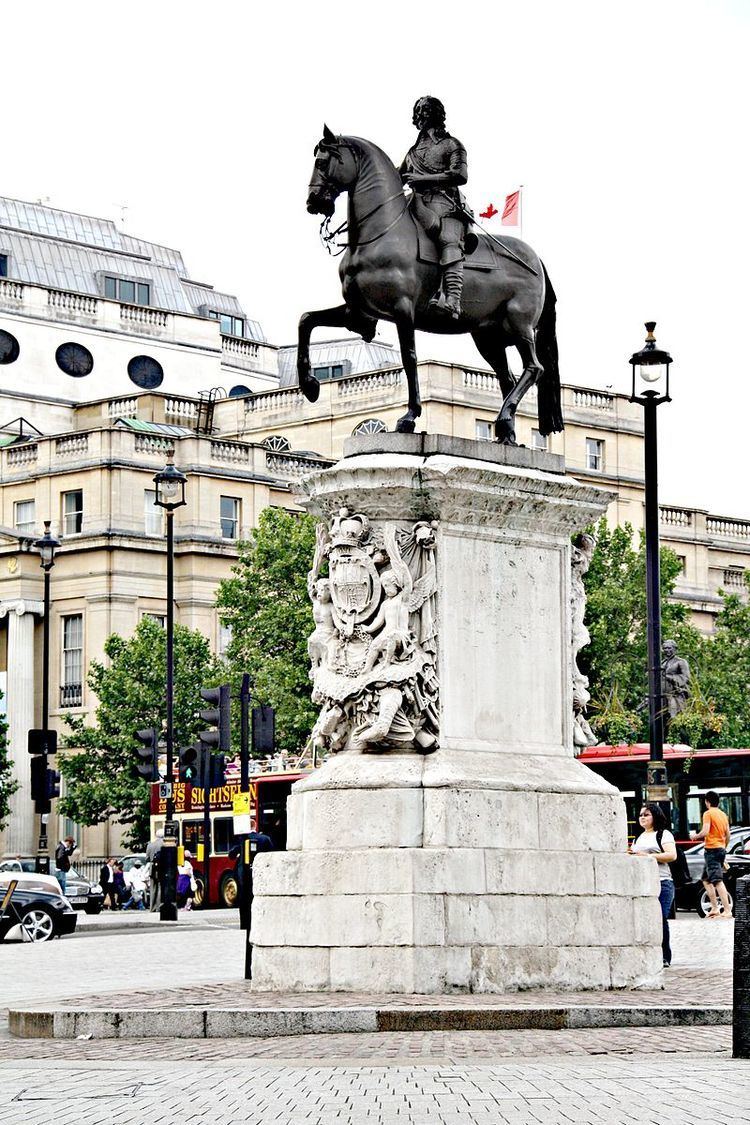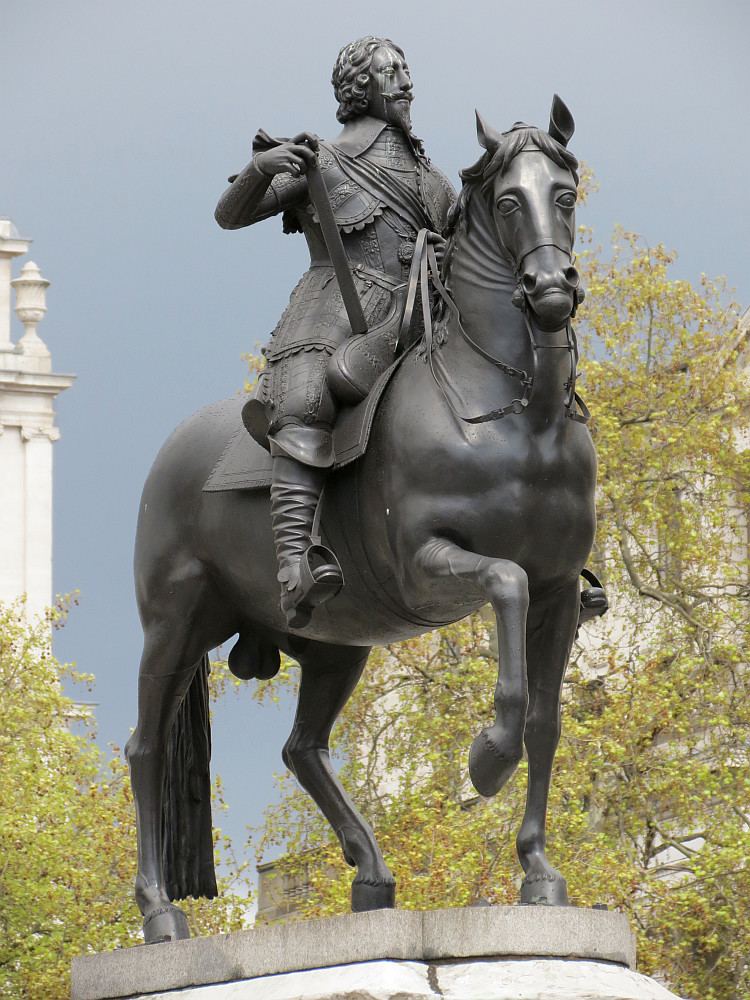Name Hubert Sueur | Died 1658, Paris, France | |
 | ||
The equestrian statue of King Charles I
Hubert Le Sueur (c. 1580 – 1658) was a French sculptor with the contemporaneous reputation of having trained in Giambologna's Florentine workshop. He assisted Giambologna's foreman, Pietro Tacca, in Paris, in finishing and erecting the equestrian statue of Henri IV on the Pont Neuf. He moved to England and spent the most productive decades of his working career there, providing monuments, portraits and replicas of classical antiquities for the court of Charles I, where his main rival was Francesco Fanelli.
Contents

Career

Henry Peacham was informed that Le Sueur was a pupil of Giambologna in Florence. Though he is not otherwise documented in Florence, in Paris he was recorded as sculpteur du Roy at the baptism of his son at Saint-Germain l'Auxerrois in 1610, when a royal secretary and the daughter of another served as witnesses. In London he and his second wife were of the Huguenot congregation in Threadneedle Street. He worked with Pietro Tacca's assistants on the equestrian bronze of Henri IV on the Pont Neuf, a project that gave him technical skills that were put to use in his equestrian Charles I. Since Inigo Jones had passed through Paris in July 1613, in the train of Lord Arundel, on their way to Strasbourg, Katharine Esdaile suggested that Jones was the one who convinced Le Sueur to go to England.
The earliest occasion on which Le Sueur received an official commission in England was for twelve figures against the frieze of the grand catafalque— both figures and hearse designed by Inigo Jones — in James I's funeral, 1625. In 1631 he was dispatched to Rome to arrange to have moulds taken of classical antiquities, to complement the Borghese Gladiator, moulds of which had been obtained for Charles, and which Le Sueur cast in London for the Privy Garden of the Palace of Whitehall. Henry Peacham praised Le Sueur for his skill and credits the Catholic priest and agent, George Gage, with obtaining the relevant casts in Rome: "The best of them is the Gladiator, molded from that in Cardinall Borgheses Villa, by the procurement and industry of ingenious Master Gage."
On a recommendation of Sir Bathazar Gerbier, he cast the famous bronze equestrian statue of the king, made in 1633 for Richard, Lord Weston, Lord High Treasurer, for his house Mortlake Park in Roehampton. This statue was ordered to be destroyed by Parliament in 1649. After being hidden by the man charged with destroying the statue, it resurfaced at the Restoration and was erected in 1675 at the original site of Charing Cross, at Trafalgar Square, London (on a small traffic island at the entrance to The Mall).
In 1634 he made for the king a cast of the Diane Chasseresse then still at Fontainebleau. Le Sueur created a market for the portrait bust, initiated and epitomized by a series of bronze busts and one marble bust of Charles I (1631), now at the Victoria and Albert Museum, the only work in marble by Le Sueur known to exist. A bust of Katherine, Lady Dysart, was formerly at Ham House. There are bronze sculptures by Le Sueur for tombs in Westminster Abbey, of the Stuart Kings Charles I and James I originally in niches on the former screen by Inigo Jones in Winchester Cathedral and now re-located at the west end of the Cathedral in which Le Sueur also provided the bronze reclining figure for the tomb of Lord Portland. At Oxford are his lifesize bronze standing figures of King Charles and Queen Henrietta Maria, made for Archbishop Laud, 1634, now at St John's College, and of the Earl of Pembroke, formerly in the forecourt at Wilton House, now in the Bodleian Library.
With the beginnings of the English Civil War, English court patronage dried up, and Le Sueur returned to Paris in 1643, produced four busts of Richelieu for the duchesse d'Aiguillon, and disappeared from art history.
His known pupils were both of Huguenot extraction as was Le Sueur himself: one was Peter Besnier (or Bennier), appointed sculptor to the king after Le Sueur's departure; another was John Poultrain or Colt.
